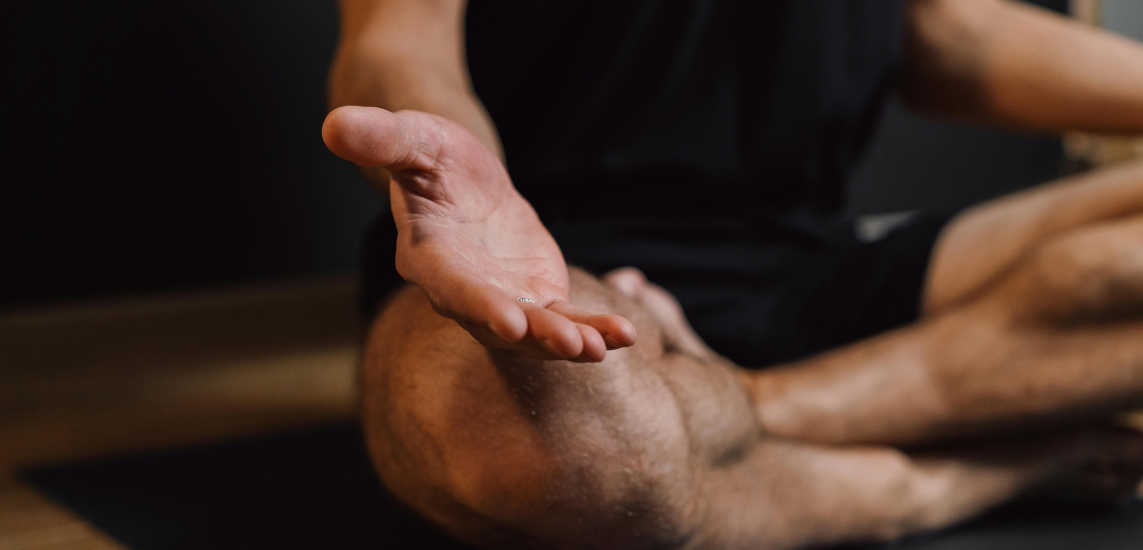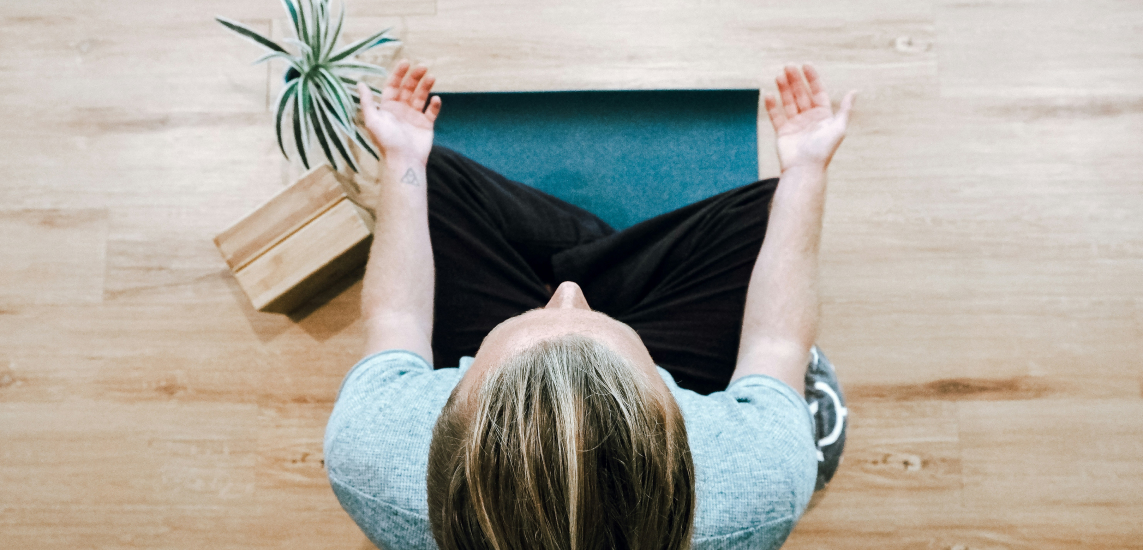Learn about the reactivity as well as different ways of identifying emotional triggers. Also discover guided meditations that can help to explore, understand and work with such triggers.
Identifying Emotional Triggers Concerns Us All
We all know the feeling.
A friend or family member says something offhand, maybe a bad joke or a random comment about an article of clothing. They probably said it without thinking about it, but something about it just stirs things up within us. We might see ourselves reacting negatively even though we know intellectually that our reaction is out of context or proportion.
This is an example of an emotional trigger.
If you don’t have the tools to manage these reactions you may find yourself spiraling into depression, anxiety or panic. One bad joke could ruin your whole day.
Identifying and learning to work with these triggers is a very important part of recovering from PTSD, or other trauma-related disorders. However, the truth is that everyone has emotional triggers and we can all benefit from learning to be less reactive.
Why Do We Get Triggered?
A trigger is an event or sense impression that sets off an emotionally upsetting memory of an event in someone’s past, usually some kind of trauma. This can result in a memory replay or flashback, but just as often the response is subconscious and a triggered person may find themselves reacting to a situation without really knowing why. The brain has created a link between the perception of a present situation or experience and that response, which might lead to automatic negative or even self-destructive behavior and habits.
Read more: Mindfulness expert Tara Brach explains how the practice of mindfulness and compassion can help healing addiction of any kind.
According to the University of Alberta Sexual Assault Centre,
“Triggers are very personal; different things trigger different people. The survivor may begin to avoid situations and stimuli that she/he thinks triggered the flashback. She/he will react to this flashback or trigger with an emotional intensity similar to that at the time of the trauma. A person’s triggers are activated through one or more of the five senses: sight, sound, touch, smell and taste.”
How To Explore And Identify Emotional Triggers
Because the sources of our triggers can be so diverse, and they can often happen subconsciously, it’s very important to identify what our triggers are and explore how they play out if we are to work with them effectively.
A 2014 study published by the National Academy of Sciences set out to explore the relationship between emotional states and bodily sensations. It found that “emotional feelings are associated with discrete, yet partially overlapping maps of bodily sensations, which could be at the core of the emotional experience.”
“Unraveling the subjective bodily sensations associated with human emotions may help us to better understand mood disorders such as depression and anxiety, which are accompanied by altered emotional processing.”
Read more: Emotional triggers can arise from unmet needs. Tara Brach explains how to let go of anger and discover what lies underneath difficult emotions through the practice of mindfulness.
Techniques For Identifying Emotional Triggers
It stands to reason that unraveling these sensations and corresponding emotional states in our bodies will help us to identify and understand the situations that trigger them, possibly even allowing us to reprogram these responses. We can do this through a number of introspective techniques.
1. Keep A Journal
Psychiatrist Judith Orloff, the bestselling author of The Empaths Survival Guide, recommends journaling as a way to explore emotional triggers.
Make a list of the situations that commonly trigger negative reactions. Try to be as vivid as possible. Keep a regular account of real-world situations on a day to day basis that have stirred up your emotions. According to Orloff, writing these down will help “to clarify the aspects of yourself need to heal.”
The next step is to write about possible situations in your past that may explain where these triggers come from. These could include significant traumas but could also include simple acts of unkindness or neglect from parents, friends or authority figures.
Read more: Identifying emotional triggers sometimes requires to get in touch with your inner child. Learn more about the concept of inner child healing and how it can free you from past experiences.
2. Visualization Meditation
Once you have an idea of the situations that trigger you and the possible sources of those triggers, a simple meditation technique that employs visualization can help you become clear on the emotions that arise as a result of these triggers and the sensations in your body that these emotions correspond to.
Lie down on your back in a quiet place, try to get as comfortable as possible. Close your eyes, take a few deep breaths and allow the body to settle. In your mind try to recall some of the sensations that have triggered your emotions in recent days and explore the sensations that arise in the physical body as you do this. Try to become clear on how the emotions that arise actually feel.
It may also be beneficial to explore some of the situations in your past that you explored in your journal. Try to recall these situations in as much detail as possible and explore the emotions that arise. This technique may not be appropriate for people with serious PTSD. If you are in doubt, consult a mental health professional.
3. Mindfulness Meditation
A 2016 neurological study published in the Journal of Biological Psychology found that the practice of mindfulness meditation helps to lessen emotional reactivity.
The study required participants hooked up to an EEG to view a series of emotional stimulating images while at the same time attending non-judgmentally to their thoughts, feelings and physical sensations. They found a significant decrease in a neurological marker of emotional response called the “Late Positive Potential” while in this “mindful” state.
The American Mindfulness Research Association published a review of this study where they expressed the following:
“One advantage of being mindful is that it allows one to respond to situations with equanimity rather than reacting emotionally in a “knee-jerk” fashion. How does mindfulness help us to do this? According to one theory, mindfulness helps to extinguish our negative emotional reactions. It does this by increasing our exposure to the stimuli that provoke these reactions while helping us to maintain an open, nonjudgmental stance.”
Many different techniques are taught in both traditional and modern mindfulness training. However, one of the most effective for tracking down and exploring the effects of emotions in the physical body is the simple technique and practice of a body scan:
Sit comfortably in a quiet place with the eyes closed. Take a moment to slow the breathing down a bit and relax all the muscles of the body not necessary to maintain an upright posture. When you are ready simply begin to pass the awareness through the physical body from head to foot, noticing whatever sensations arise. Try not to label or judge these sensations. Simply observe them. If you become distracted by a thought or emotion, that’s OK. Simply observe the thought or emotion and allow it to pass before returning to the body scan.
Our free library offers thousands of guided mindfulness meditation practices — start your journey towards a more attentive awareness of your thoughts and feelings now. You might also be interested in learning how to do a mindful check-in whenever you feel overwhelmed by situations.
Before reading the fourth technique for identifying emotional triggers, you might want to explore this special playlist including popular guided meditations that help to understand and work with your own emotional reactivity and explore personal triggers in different ways. You can find all of these practices in our free library in the app:
- Exploring A Difficulty Elizabeth Granger 16:46
- Find Space To Reduce Reactivity Morgan Webert 16:32
- When Triggers Arise — A meditative poem Destiny Love 4:56
- Healing PTSD Meditation — Help Heal the Triggers Lisa A. Romano 32:06
- Step Left And Choose Again Kathryn Eriksen 9:58
- Self Care For Moments Of Angst & Doubt Katharine A. Chestnut 8:16
- Clear Negative Emotions & Painful Memories Dexter and Alessandrina 11:02
- Diffuse Stress Triggers With EFT And Visualisation Morgan Webert 10:48
- Mindfulness Practice 9: Embodied Healing Dena Samuels 9:17
4. Right Intention
It’s important when we’re trying to heal our old wounds or reconfigure old patterns that we go into it with positive intentions:
- The first step is, therefore, to accept responsibility. Even though our wounds may not be our fault, it’s still important that we accept responsibility for our reactions, our behaviors and the state of our own mind. Meditation teaches us that we have the power to change these things, but that no-one else can do it for us.
- The second step is to assume other people’s best intentions. If you go into a situation with at least the intellectual conviction that the person you are communicating with is just doing their best to be a good person with the hand they’ve been dealt, just like you, it will be easier to practice non-reactivity when you are emotionally triggered.
- The third step is to have a plan. Using the tools you’ve developed through journaling, visualization and meditation, try to roleplay some scenarios in which you might get triggered and develop a strategy about how you might handle them. Make a commitment to executing on the plan whenever you feel an emotional reaction brewing.
Meditation can help us develop the tools to identify emotional triggers and change, but it takes a proactive mindset to put those tools into practice in the context of our daily life.
Read more: Emotional reactions at work are often a mirror to our own insecurities. Discover how to manage emotional triggers at work.



-1.jpg)



